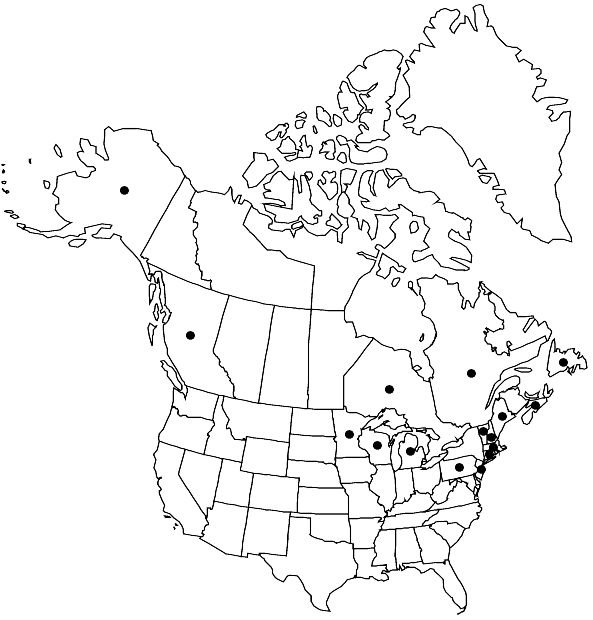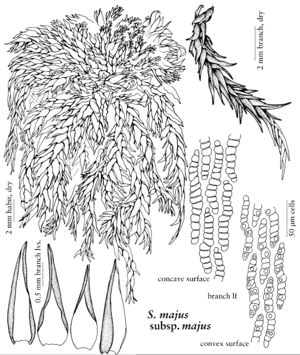Sphagnum majus subsp. majus
Plants golden brown to dark-brown; branches strongly laterally curved. Stem-leaves 0.8–1.3 mm, usually appressed. Branch leaves 2–2.8 mm, straight to usually strongly subsecund; hyaline cells on convex surface often with 2 pores per fibril interval, pores usually less than 1/3 cell diameter. Spores 33–38 µm; both surfaces roughly verrucate scabrate; proximal laesura less than 0.5 spore radius.
Habitat: Forming wet carpets but habitat unclear due to recent taxonomic separation from subsp. norvegicum, in North America, subsp. majus seems to occur in ombrotrophic to poor fen habitats, often on floating mats, mixed with S. cuspidatum in eastern North America
Elevation: low to moderate elevations
Distribution

B.C., Nfld. and Labr. (Nfld.), N.S., Ont., Que., Alaska, Conn., Maine, Mass., Mich., Minn., N.H., N.J., Pa., Vt., Wis., Eurasia
Discussion
Sporophytes of subsp. majus are rare. In the field it is typically darker brown than subsp. norvegicum, while its capitulum is denser and less stellate appearing than in the latter. See also discussion under 23. Sphagnum annulatum.
Selected References
None.
Lower Taxa
"elongated" is not a number.
